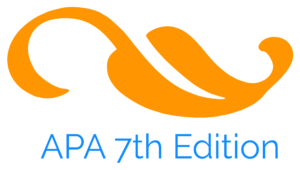Courses
Are you writing a thesis/dissertation/paper or even a research proposal in American Psychological Association (APA) Style?
If “yes” then these courses can help you write impeccable content!
| Nuances of APA Style -Demo (Free/Lifetime) |
|---|
 Punctuation PunctuationFirst 5 topics (i.e., period, spacing, comma, semicolon, and colon) |
 Spellings Spellings |
 Capitalization Capitalization |
 Italics Italics |
 Abbreviations Abbreviations |
 Numbers Numbers |
 Statistical and Mathematical Copy Statistical and Mathematical Copy |
 Presentation of Equations Presentation of Equations |
 Lists Lists |
 Tables and Figures Tables and Figures |
 Citations Citations |
 References References |
 Online Meeting With Mentor* Online Meeting With Mentor*(No free meetings) |
|
Nuances of APA Style |
*In the Demo course, there are no free online meetings with the mentor. However, you can book an online meeting at ₹500/meeting.
| Nuances of APA Style -Complete (₹1999/Lifetime) |
|---|
 Punctuation PunctuationAll 10 topics (i.e., period, spacing, comma, semicolon, colon, dash, quotation marks, parentheses, square brackets, and slash) |
 Spellings Spellings |
 Capitalization Capitalization |
 Italics Italics |
 Abbreviations Abbreviations |
 Numbers Numbers |
 Statistical and Mathematical Copy Statistical and Mathematical Copy |
 Presentation of Equations Presentation of Equations |
 Lists Lists |
 Tables and Figures Tables and Figures |
 Citations Citations |
 References References |
 Online Meeting With Mentor* Online Meeting With Mentor*(2 free meetings) |
|
Nuances of APA Style |
*In this course, a scholar is entitled to 2 free online meetings with the mentor. Rest are charged at ₹500/meeting.
Disclaimer
These Nuances of APA Style courses are not meant to be an official guide or a substitute for the Publication Manual of the American Psychological Association, 7th Edition (2020), which contains comprehensive and authoritative guidance on all aspects of scientific writing. APA has a number of resources to help individuals learn APA Style, including free tutorials, FAQs, and an APA Style blog. Visit https://apastyle.apa.org/ for more information, and join APA Style on Facebook https://www.facebook.com/APAStyle and Twitter https://twitter.com/#!/APA_Style.
What will you get in the APA Style course? |
|---|

Who will benefit from this course? |
|---|

Why did I make these courses? |
|---|
After my PhD, I made educational websites and started helping research scholars with their data analysis work. However, as I was taking assignments for data analysis, I began noticing mistakes related to English grammar and, more specifically, the APA Style in the content. So, I also started proofreading research content, which includes theses, papers, questionnaires, and so forth.
Friends, usually, we begin our research journey by studying extensive literature, learning statistical software, and learning many more things. Ultimately, whatever we do (learn) goes into the background, and what comes out is the research content that we write on a paper, whether it’s a research proposal, questionnaire, paper written for journals, or, ultimately, a thesis.
A research content becomes the “face” of your hard and enduring work, and any type of anomaly can ruin its desired effect.
There is no doubt that the subject experts best judge the worth (credibility) of your work, but you should also keep in mind one more thing—you are writing your research content in a language (i.e., English) that has a methodology (grammar, punctuation, etc.), which you should take care of! And above all, if you are writing in a particular style (I am talking here of the APA Style), you have to be extra careful to adapt to its nomenclature.
Moreover, it has also been mentioned in Section 1.10 of the Publication Manual of the American Psychological Association (7th edition),
But friends, sadly, in my five years of proofreading, I have found many anomalies regarding the English language and the APA Style. So, after seeking permission from the American Psychological Association (which took me a year!), I created this online course, Nuances of APA Style (with my examples, explanation videos, practice questions, glossary, etc.), because I believe the research content should be impeccable (flawless) work!
The Demo-Nuances of APA Style Course
This free Demo-Nuances of APA Style course will give you an idea about the main Nuances of APA Style course. So, if you feel that you have learned something new in this demo course and want to learn more, go for the main Nuances of APA Style course; otherwise, please don’t waste your precious money and, more importantly, time!

Frequently Asked Questions |
|---|



